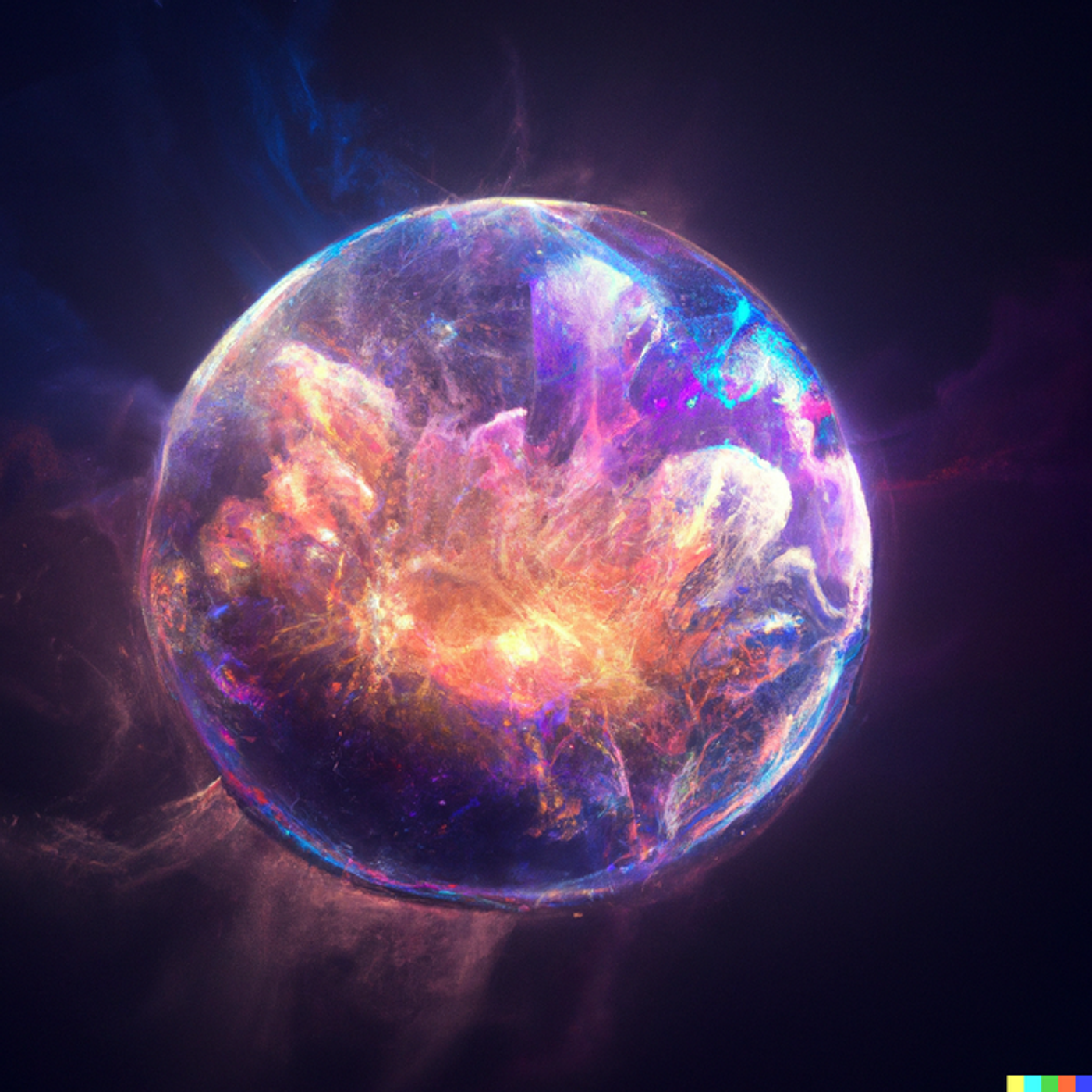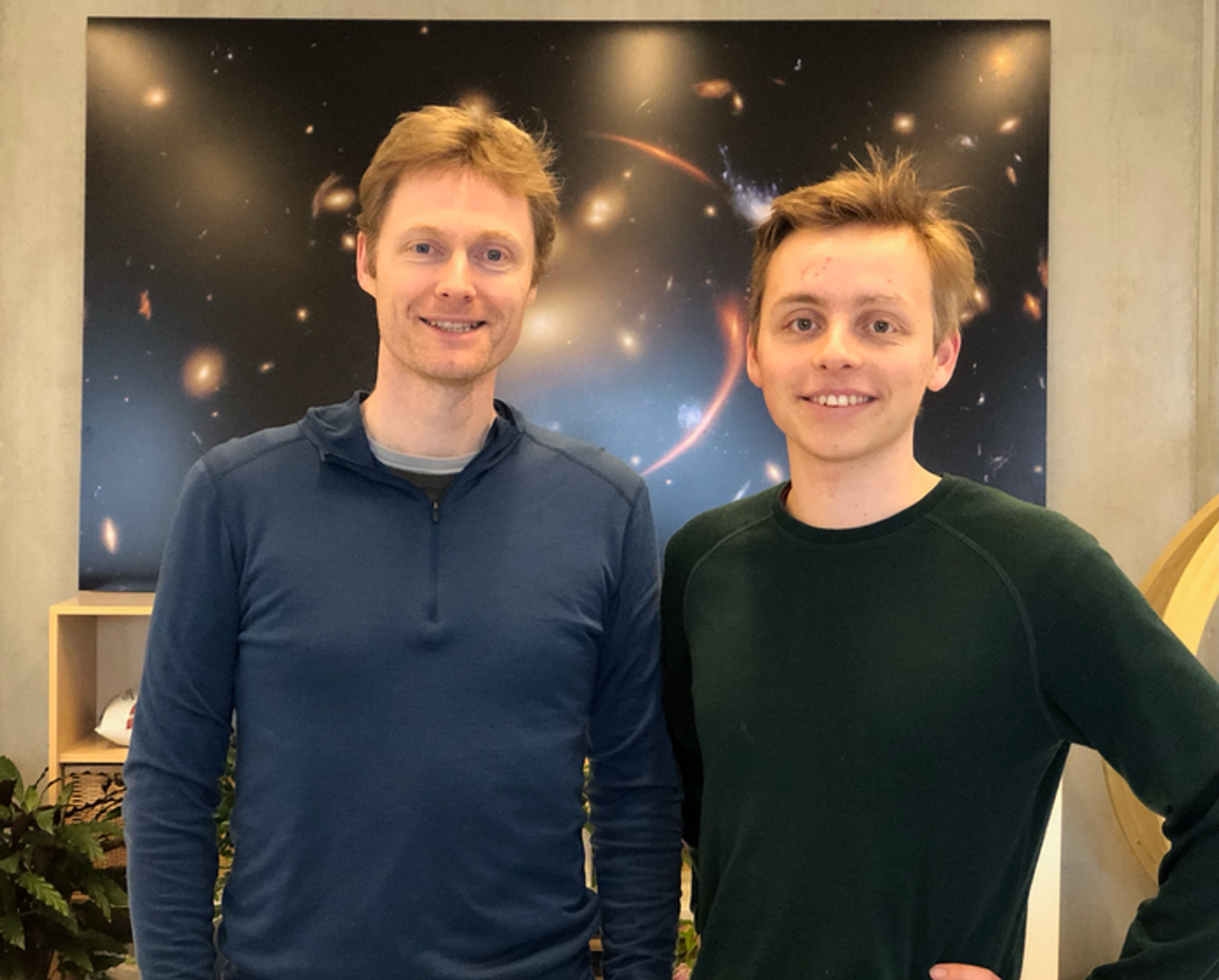Colliding Neutron Stars Produce Spherical Explosion
Artist's illustration of a kilonova. (Credit: Robin Dienel/Carnegie Institution for Science)
Neutron stars are some of the most incredible objects in the universe, as they are the end result of a star that has completed its lifespan after consuming all of its fuel. While stars are typically known for being quite large, neutron stars are quite the opposite, as they are very small but also very dense. As an example, the average size of a neutron star is approximately 12 miles in diameter but has mass of a sun crammed inside this tiny ball, making it extremely dense.
It is these incredible stars that an international team of researchers led by the University of Copenhagen hope to learn more about as they examined data from what’s known as a kilonova that was observed at 140 million light-years from Earth in 2017. A kilonova, or kilonovae in the plural form, is the explosive result of two neutron stars colliding, and the researchers are exploring the almost perfectly spherical shape of the kilonova. This study holds the potential to help scientists better understand some of the most extreme physical characteristics of the Universe.
"You have two super-compact stars that orbit each other 100 times a second before collapsing. Our intuition, and all previous models, say that the explosion cloud created by the collision must have a flattened and rather asymmetrical shape," said Albert Sneppen, who is a PhD student at the Niels Bohr Institute, and first author of the study.
But when the researchers examined the data for the kilonova in 2017, they were shocked to discover their models were wrong and the explosion is not only completely spherical, but it’s very close to being a perfect sphere.
"No one expected the explosion to look like this,” said Dr. Darach Watson, who is an associate professor at the Niels Bohr Institute, and a co-author author on the study. “It makes no sense that it is spherical, like a ball. But our calculations clearly show that it is. This probably means that the theories and simulations of kilonovae that we have been considering over the past 25 years lack important physics.”
Artist's illustration of spherical explosion. (Credit: Albert Sneppen)
But the real question is how the kilonova is spherical, but the researchers pose several hypotheses:
"The most likely way to make the explosion spherical is if a huge amount of energy blows out from the center of the explosion and smooths out a shape that would otherwise be asymmetrical,” explains Sneppen. “So, the spherical shape tells us that there is probably a lot of energy in the core of the collision, which was unforeseen.”
One such speculation the secret might lie in what happens when the collided neutron stars collapse to a black hole, which happens after they briefly join as a single hypermassive neutron star upon collision.
"Perhaps a kind of 'magnetic bomb' is created at the moment when the energy from the hypermassive neutron star's enormous magnetic field is released when the star collapses into a black hole,” said Dr. Watson. “The release of magnetic energy could cause the matter in the explosion to be distributed more spherically. In that case, the birth of the black hole may be very energetic.”
One such finding that also surprised the researchers was observing only evenly-distributed lighter elements within the kilonova, which often include krypton or strontium, and not heavier elements, to include uranium or gold. This puzzled the researchers since previous models predicted both light and heavy elements being expelled from the kilonova in varying directions. But the detection of only lighter elements could mean other forces might be at play, such as neutrinos, which is a particle that scientists still know very little about.
"An alternative idea is that in the milliseconds that the hypermassive neutron star lives, it emits very powerfully, possibly including a huge number of neutrinos,” said Sneppen. “Neutrinos can cause neutrons to convert into protons and electrons, and thus create more lighter elements overall. This idea also has shortcomings, but we believe that neutrinos play an even more important role than we thought.”
Study co-author Darach Watson (left) and study lead author Albert Sneppen (right). (Credit: Darach Watson)
The almost perfectly spherical shape of the kilonova also intrigues the researchers, as well.
"Among astrophysicists there is a great deal of discussion about how fast the Universe is expanding,” said Sneppen. “The speed tells us, among other things, how old the Universe is. And the two methods that exist to measure it disagree by about a billion years. Here we may have a third method that can complement and be tested against the other measurements.”
The current method used to calculate the expansion of the Universe is known as the “cosmic distance latter”, which is accomplished through measuring the distances between different objects in the cosmos, whether it be stars or galaxies, and are viewed as rungs on a ladder.
"If they are bright and mostly spherical, and if we know how far away they are, we can use kilonovae as a new way to measure the distance independently – a new kind of cosmic ruler," said Dr. Watson. "Knowing what the shape is, is crucial here, because if you have an object that is not spherical, it emits differently, depending on your sight angle. A spherical explosion provides much greater precision in the measurement.”
However, Dr. Watson also stresses that more data is needed from more kilonovae, since the one presented in this study is the first with valuable data being used, and the researchers expect the LIGO observatories will ultimately be detecting a lot more kilonovae in the future.
As always, keep doing science & keep looking up!
Sources: NASA, Nature, EurekAlert!











